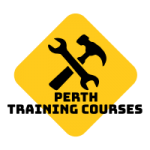In need of a telehandler licence in Perth
With the various attachments, additions, sizes and models of the telehandlers that are available, it can be difficult to understand which telehandler you need for a successful project. This blog will insure that you choose the right telehandler to hire for the job you need, with costs down and efficiency increasing.
Which telehandler attachment do I need to use?
Before selecting which telehandler attachment is the correct one for your job, you should first analyse the job site and understand the functionality you want your telehandler to have. With over 40 different attachments, knowing what is best for your telehandler job is crucial to ensuring that your project is both time-consuming and cost-effective. You’ll find that telehandler attachments are similar to forklifts and cranes, and it all comes down to which machine and attachment is best suited for your site.
What’s the hi-rail telehandler?
A hi-rail telehandler is a telehandler that can operate on both conventional and rail roads. These telehandlers come standard with their conventional rubber tyres, but they can also be fitted with flanged steel wheels to run on rails. The aim of the conversion of hi-rail telehandlers is to complete the work on the rails in areas that are not accessible to normal wheeled telehandlers.
What’s the fork attachment?
The attachment for the fork is the most commonly used attachment for the telehandler. This essentially modifies a telehandler to a machine capable of lifting various loads of heavy equipment, such as:
Steel bar
Timber: Timber
Blocks of concrete
Pallets are
Goods packaged
Industrial Pipe
Fork attachments are very diverse as they can be customised to suit the size and materials you are currently using. The following fork attachments are:
Pallet fork – designed to pick up and move palletized materials
Tilting cart – make it easier to deliver materials on hills or roofs
Adjustable carriage – allows adjusting the width of the fork
Side-shift carriage – can move the carriage to the left or the right with ease.
What’s the Auger Attachment?
The telehandler auger attachment can be used for drilling small holes for irrigation purposes or for larger holes for telegraph poles. In order to use the right auger attachment, take into account the drill head, the drive unit and the swing control coupling will allow you to hire the right attachment. In combination, the size and the teeth must also be considered as the size needed to match the hydraulic pressure of the telehandlers, and the teeth must be adapted to the ground type.
What does the telehandler work platform attachment do?
Elevated Work Platforms (EWPs) are an attachment that enables people and equipment to be lifted and lowered in order to perform tasks. These EWPs are generally used for temporary use in the case of powerline maintenance, firefighter emergency access or construction work. They are only designed to hold a limited amount of weight – usually less than a tonne, but there are some models with a higher working load.
What does the telehandler hydraulic winch attachment do?
Instead of hiring a crane for heavy lifting needs, a winch attachment for your telehandler will just as easily complete the task. The winch attachment may have a length adjusted to insure that the task is as accurate as possible. Safety features are an important part of the winch attachment, which includes a limit sensor for movement up and down as well as a swivel self-locking hook. The winch is ideal for tight workspaces and does not result in the use of other equipment, lowering costs and increasing efficiency.
What’s the bucket attachment?
The bucket attachment is a specially designed piece of equipment to transport any loose material you may have on your work site. There are different sizes of buckets to accommodate any material that may need to be transported. Larger buckets are commonly used for lighter materials, while general purpose buckets – usually standard on telehandlers – are excellent for digging dry soil. A multipurpose bucket is inspired by dozing, back blading and digging and can be used for this purpose if you often switch between environments or attachments. Some buckets are also produced with grapples, which can secure materials larger than the width of the bucket.
Previous Post:
What is the Right Telehandler for my Job?

